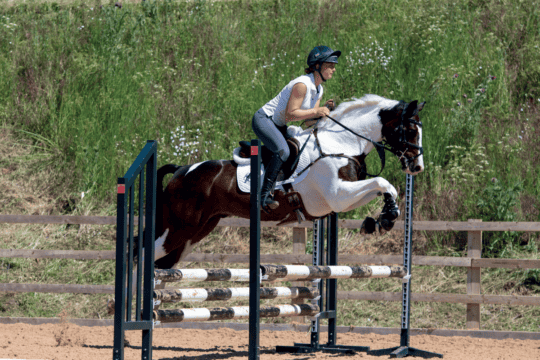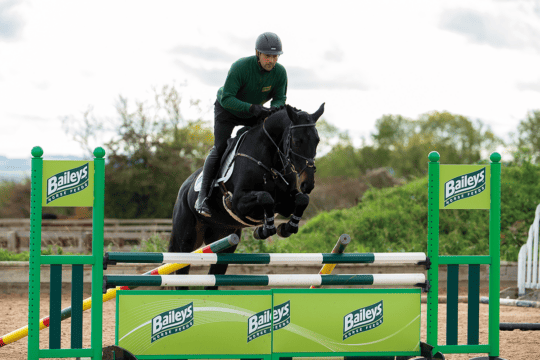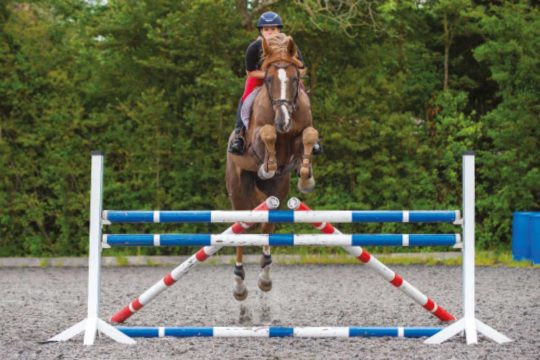-
Riding Schooling and Training
-
Health and Veterinary
-
Management
-
Mind Matters
-
Buying and Selling
-
Insurance Advice
FAQs
Featured Professional

Tim Stockdale
Tim is one of the country's foremost showjumpers and trainers, having represented Great Britain on over 50 occasions. He is a board member of British Showjumping and has served as Chef d'Equipe of the British team.
Get set for success in the showjumping ring with Tim Stockdale’s brilliant tips for shaving seconds off your jump-off times
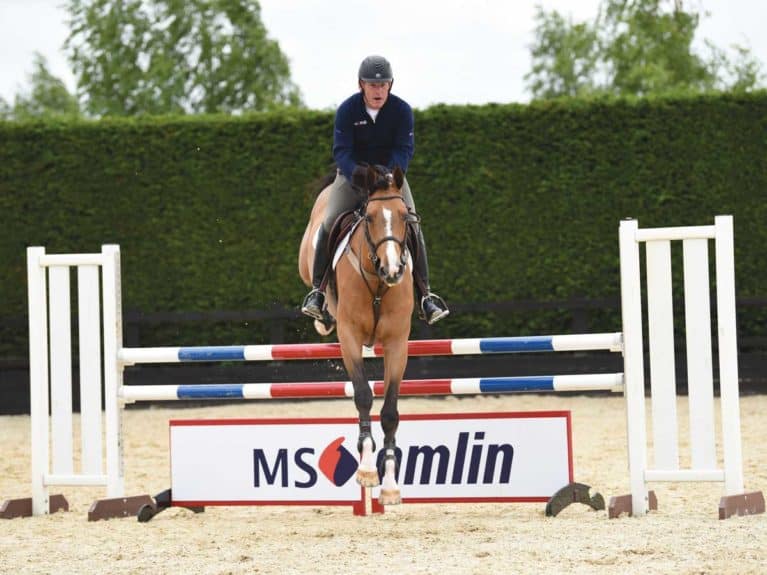
You’ve jumped that all-important clear round and now you need to go into the jump-off and attempt to complete the course in a quick time. And while speed is the deciding factor, you still need to leave all the fences up. Going too fast puts you at risk of knocking poles or wasting precious time by over-shooting turns. To be in with a chance of a rosette, work on your accuracy and practise these five great exercises that will help you achieve a quick time and a clear round.
Jump on an angle
This is a great way to shave a few seconds off your time in a jump-off. You can do this to take a shorter route from one fence to another or to set you up for a better turn to the next fence.
It’s something to practise at home before trying it at a show and remember that even though you’re approaching on an angle, it’s still important to jump across the middle of the fence and make sure your horse is straight on take-off. If you jump to one side, you increase the risk of a run-out and if your horse isn’t straight, he’s more likely to tip a rail.
Exercise 1 – A diagonal line
Set up a fence in your arena, allowing enough room to approach from each rein. When you’ve warmed up and your horse is going forward in a good rhythm, jump the fence from a straight approach two or three times – don’t come from an angle straightaway.
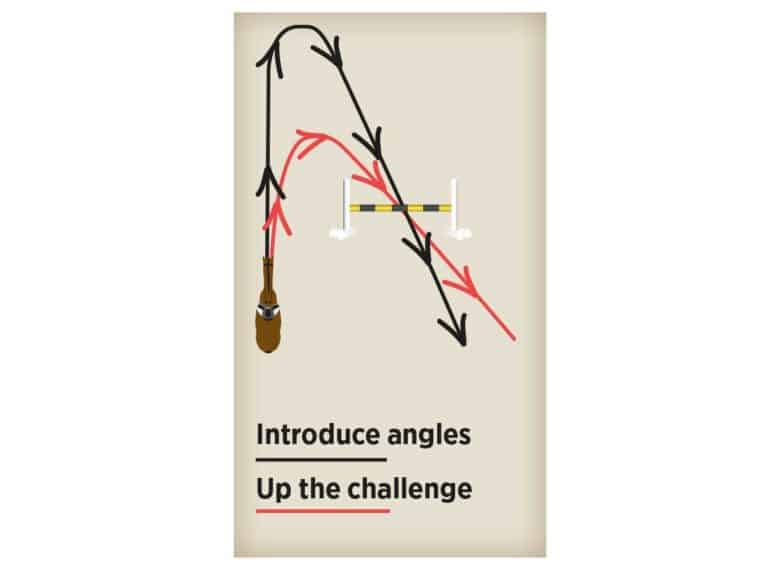
Next, keeping the same rhythm, approach on a slight angle, aiming for the centre of the fence. Sit up and look to where you want to go, not at the fence itself. Remember to keep your leg on to encourage him to go forward.
Approach the fence from both reins and, as your horse gets the hang of the exercise, increase the degree of the angle.
Ride tighter turns
Great turns win jump-offs because if you can turn tightly into a fence, or turn inside another fence rather than going round it, you’ll shorten your route around the course. Practise making quick turns before and after a fence – the key to this is keeping your horse balanced and in a good rhythm. You can work on turns all the time when you’re in the arena and even out hacking, as you need to bend your horse around your leg and stay in balance whether you’re going round a corner, riding a circle or serpentine, or turning into a fence.
Exercise 2 – Balanced turns
Set out two fences and practise riding a smooth, balanced turn between them. At first, keep the turns sweeping and the jumps small. Here’s what you need to do…
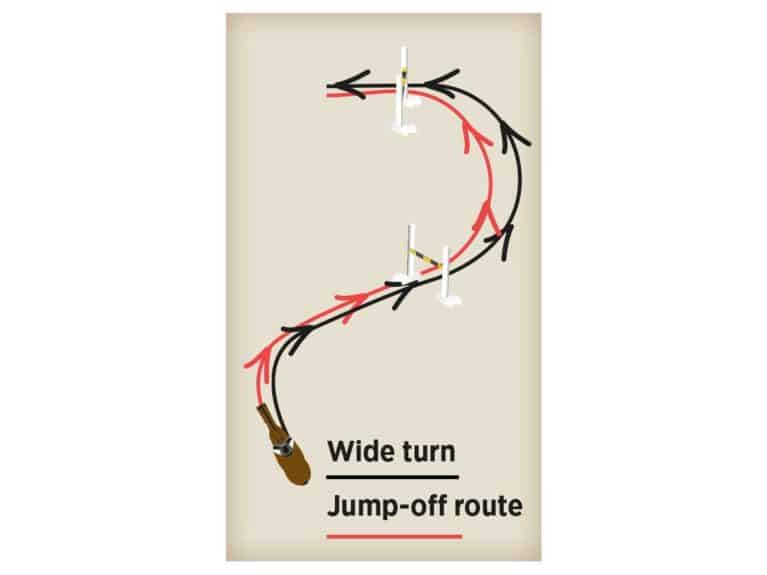
- position your inside hip slightly forward and put a little more weight in your outside stirrup
- bend your horse around your inside leg and have your outside leg behind the girth to encourage a powerful, bouncy canter
- guide him around the turn with your inside rein and use your outside rein to support his outside shoulder and prevent him from falling out
- look up to where you’re going to guide your horse to the middle of the fence
- sit up, which will prevent you tipping forward or collapsing to the inside
If you’ve kept the rhythm around the turn you shouldn’t need to change anything in the last few strides, but make sure your horse jumps the middle of the fence. When your horse is staying balanced on a wide turn, you can up the challenge and make your turns tighter.
Top tip – Use markers to help you perfect your turns. Position a cone or block where you want to make your turn to give you something to aim for and help prevent your horse falling in. A marker will also stop you turning too early.
Make a quick turn back
Being able to turn tightly on landing can help you get to the next fence quickly. It can save two or three strides compared to a sweeping turn.
Exercise 3 – Fall in
To practise this turn, set out two fences that require you to land and turn back on yourself. Then…
- as your horse lands after the first fence, use your outside hand to ask him to turn and push through his shoulder in the new direction
- stand slightly in your stirrups to allow your horse to move freely underneath you
- shift your weight slightly to the inside
- place your inside leg on the girth and your outside leg behind the girth to guide him around the turn
This type of turn is a bit unusual as you almost want your horse to fall in – it’s like a turn you’d see barrel racing horses do in Western riding. Although it’s a great way to change direction on the course, you wouldn’t turn into a fence like this as it lacks power.
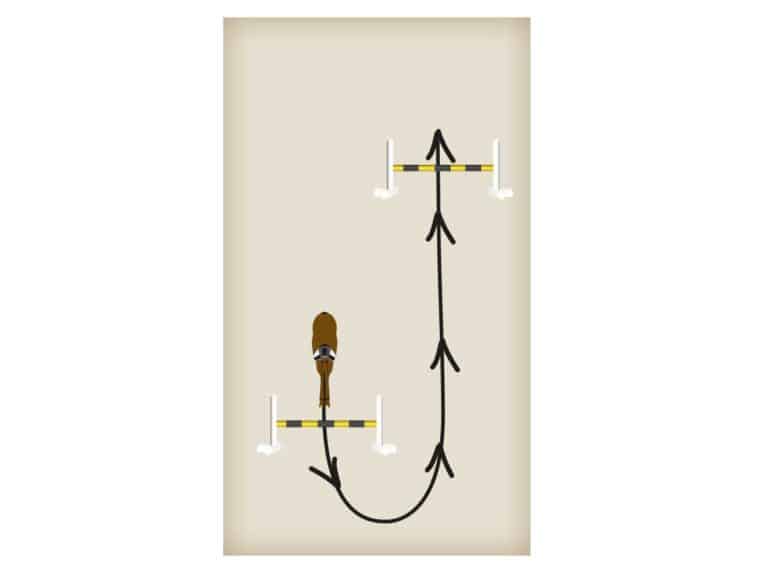
Top Tip – Practise riding in a light seat, where you stand in your stirrups to get the weight off your horse’s back, when moving between fences.
Take strides out
A related distance is where two fences are set a certain number of strides apart, such as three, four or five strides. You can save time in a jump-off by covering the distance in fewer strides. To achieve this, you need to train your horse to lengthen his stride while staying in rhythm and balance. It’s not about going flat out, though, because you need to stay in control.
Exercise 4 – Lengthen his steps
Set out two ground poles on the long side of the arena, five strides (approx 21m) apart. Establish a good rhythm and ride between the poles in five strides, counting the strides out loud as you go.
Then encourage your horse to take longer, more powerful steps and ride over the poles again, this time aiming for four strides. Squeeze with your legs to send him forward, but maintain a contact to contain his energy and keep his inside hindleg stepping underneath. You can then take the poles away and practise lengthening his stride down the long side.
Because your forward-going canter is powerful, you can jump out of it as well as using it to move quickly between fences. However, it does depend on the type of fence, as uprights such as planks should be jumped out of a short, bouncy stride.
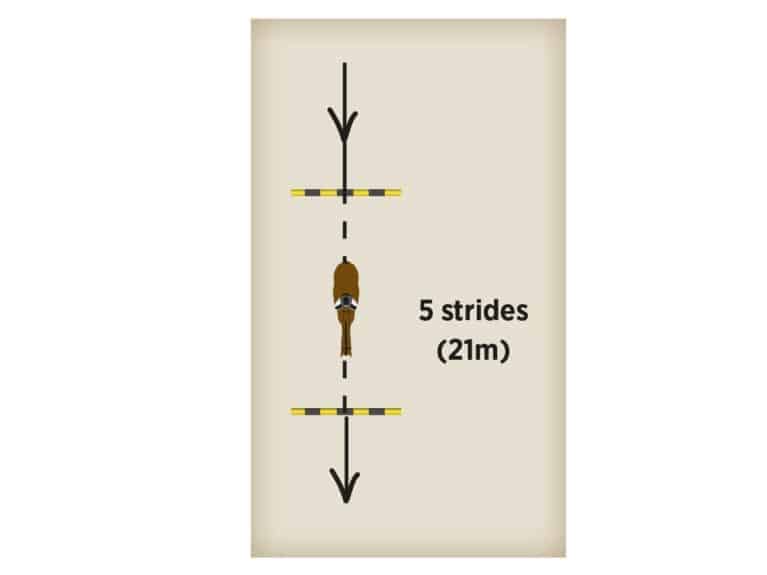
Top tip – Don’t panic and feel you need to rush if you’re drawn first to go in a jump-off. You should be allowed enough time to get your horse thinking forward and to pop over a couple of fences before your round.
Make flying changes
Being able to make flying changes will save valuable seconds in a jump-off, as you can change direction and canter lead without having to drop down into trot. The secret to a smooth, balanced change is to teach your horse to wait for your aid, not anticipate it and accelerate. A common mistake is to kick him into the change, making him shoot forward and lose balance and rhythm.
Exercise 5 – Time to change
Start working towards flying changes by practising simple changes – a change of canter lead through walk – which will encourage your horse to wait for your aid. In canter, prepare for the downward transition to walk by taking your body position slightly behind the vertical, squeezing the reins and saying ‘whoa’. Walk for four steps, then ask for the new canter lead. When you’ve perfected simple changes, you can…
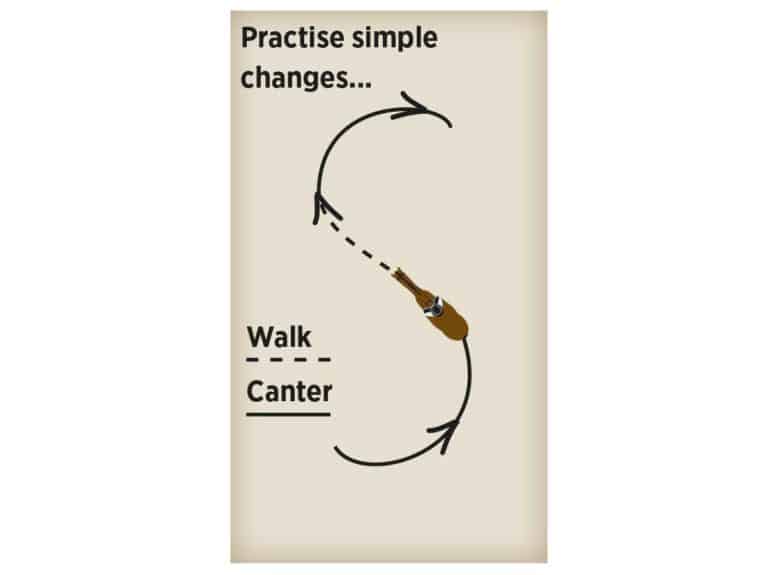
- introduce a raised pole, which will elevate your horse’s forehand and create the energy and power he needs to change his balance from one lead leg to another. Approach in canter and ride an S-shaped line to help you change bend ready for the new strike off. As your horse takes off, open your new inside hand and put your outside leg behind the girth to ask for the new canter lead
- put the pole on the ground and ride the exercise in the same way
- progress to asking for the lead change without the pole, still riding an S-shape to help you change bend ready for the new strike off
If you keep practising and give your horse the right instructions, he should soon get the hang of flying changes, although it will take time. If he picks up the wrong lead, calmly bring him back to trot and ask for the correct strike-off, then give him a pat when he gets it right.
Top tip – Horses can drift across the school when they’re learning flying changes, so place two guide poles on the ground after the raised pole to help him stay straight on landing.
Position pointers
When jumping, aim to stay light in your riding position, with your body central and your seatbones just in contact with the saddle. Your horse needs to be able to lift his shoulders and be soft in his back to make a correct shape over a fence, and he can’t do this if you’re driving into him with your seat. Whether you’re competing in dressage, eventing or showjumping, you want a light, balanced position so you move as one with your horse.
Top tip – Consistency is key when training horses. Always ask your horse in the same way every time and he’ll soon understand what you want him to do.



